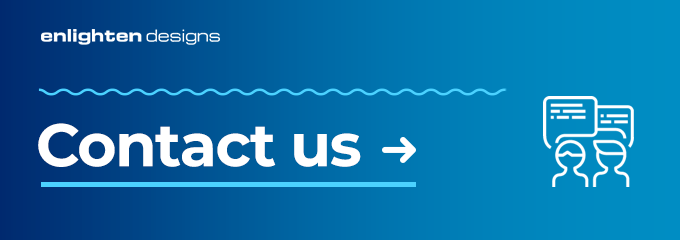Coupled CMS
A coupled CMS is also known as a traditional CMS. It’s the simplest type of CMS architecture: underlying elements are ‘coupled’ together and rely on the same resources.
What that means is that the back end of the CMS is closely integrated with the front end. The database that stores the content, the interface(s) where the content is created, and the publishing engines are directly integrated with the front end of the CMS. So, if there are problems with one part of the CMS, the whole thing could fail.
Pros of a Coupled CMS
There are two main advantages to a coupled CMS:
- Accessibility
- Integrated tools for creating and publishing content
That means that it’s easy to create many types of content, including core site pages and blog posts. In addition, multiple users can utilise a coupled CMS. Those users can also be given different privileges; for example, a content writer could write a blog post, but the marketing director has final say over its publication.
Cons of a Coupled CMS
There are a few disadvantages to a coupled CMS:
- Because everything is so tightly integrated, a vulnerability in one part of the system could bring down the entire CMS architecture
- Unless the CMS vendor supports particular technologies (such as those that optimise content delivery), you’re stuck with the tools and features that come with it
- Developers have to adapt to the system—the architecture is restrictive and inflexible.
Use Cases for a Coupled CMS
The best use-case for a coupled CMS is a simple website intended for marketing purposes. It’s not a good fit for hosting multiple sites at a time or for an application.
Decoupled CMS
A decoupled CMS is more complex than a coupled CMS. Where the coupled CMS relies on the same resources, the decoupled CMS ensures that the front- and back-end operations are separate (or ‘decoupled,’ as it were).
That means that the front-end and back-end rely upon different resources, making it more efficient to use. The back end has a database that stores content and an interface for uploading that content. Moreover, the front-end and the back-end don’t have to utilise the same code, and it’s easier to scale up the front-end because it doesn’t rely upon the same resources.
Pros of a Decoupled CMS
There are a few advantages to using a decoupled CMS:
- Content creators don’t have to concern themselves with knowing how to code, or worry that their content won’t look good when it’s published
- A decoupled CMS is less vulnerable because the elements in the system aren’t dependent on the same resources.
The Disadvantage of a Decoupled CMS
There is one major disadvantage of a decoupled CMS: it’s complex. If you use this type of CMS architecture, be patient with the development team as they overcome learning curves.
Use Cases for a Decoupled CMS
While you could use a decoupled CMS for smaller sites with few pages, it makes more sense to use it for a larger site with many pages.
Headless CMS
A headless CMS is similar to a decoupled CMS in that the authoring function of the CMS architecture is separate from the publishing function. The difference is that there’s not a single designated front-end (making it ‘headless’).
Instead, data is delivered via APIs to various channels. This means developers can create multiple front-ends, all of which can utilise calls from APIs.
Pros of a Headless CMS
There are a few pros to a headless CMS:
- Content delivery is fast
- There’s more flexibility for developers—they can use the framework they know best to create front-ends
- It’s easy to publish content to existing and emerging channels.

Cons of a Headless CMS
There are two main disadvantages with a headless CMS:
- If there’s no existing front-end in place (which is usually the case), developers have to create one from the ground up, which requires more time and resources
- It’s not easy to preview content.
Use Cases for a Headless CMS
A headless CMS makes the most sense for teams that produce lots of content and publish it to many channels.
Hybrid CMS
A hybrid CMS is similar to a headless CMS because the back-end is a separate system, and there isn’t a single front-end. Rather, developers use APIs to call content to front-end systems.
What differentiates a hybrid CMS from a headless CMS is that in a headless CMS, information is isolated by channel. In a hybrid CMS, back-end users can interact with published content. For example, if you wanted to publish something on Facebook that had already been published on Twitter, you could do that.
Pros of a Hybrid CMS
There are several advantages to a hybrid CMS:
- Content creators can edit their finished product, unlike a headless CMS
- The web content management system allows teams to control how information is shared between channels
- It’s easier to integrate with other parts of a channel (such as an e-commerce component).
Cons of a Hybrid CMS
The cons of a hybrid CMS are similar to those of a headless CMS:
- Developers need to devote a great deal of time and resources to developing the 'head' of each channel
- There’s a high learning curve for content creators and developers.
Use Cases for a Hybrid CMS
A hybrid CMS is a good choice if you’re publishing lots of content to many different endpoints.
Enlighten Designs: Helping You Choose the Right CMS Architecture for Your Business
For over two decades, Enlighten Designs has been delivering amazing digital experiences to clients. Our experience and expertise in CMS architecture enables us to choose the right solution for your content management needs. To learn more, contact us.

